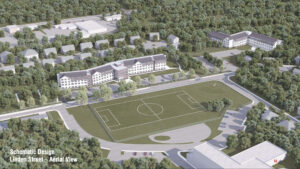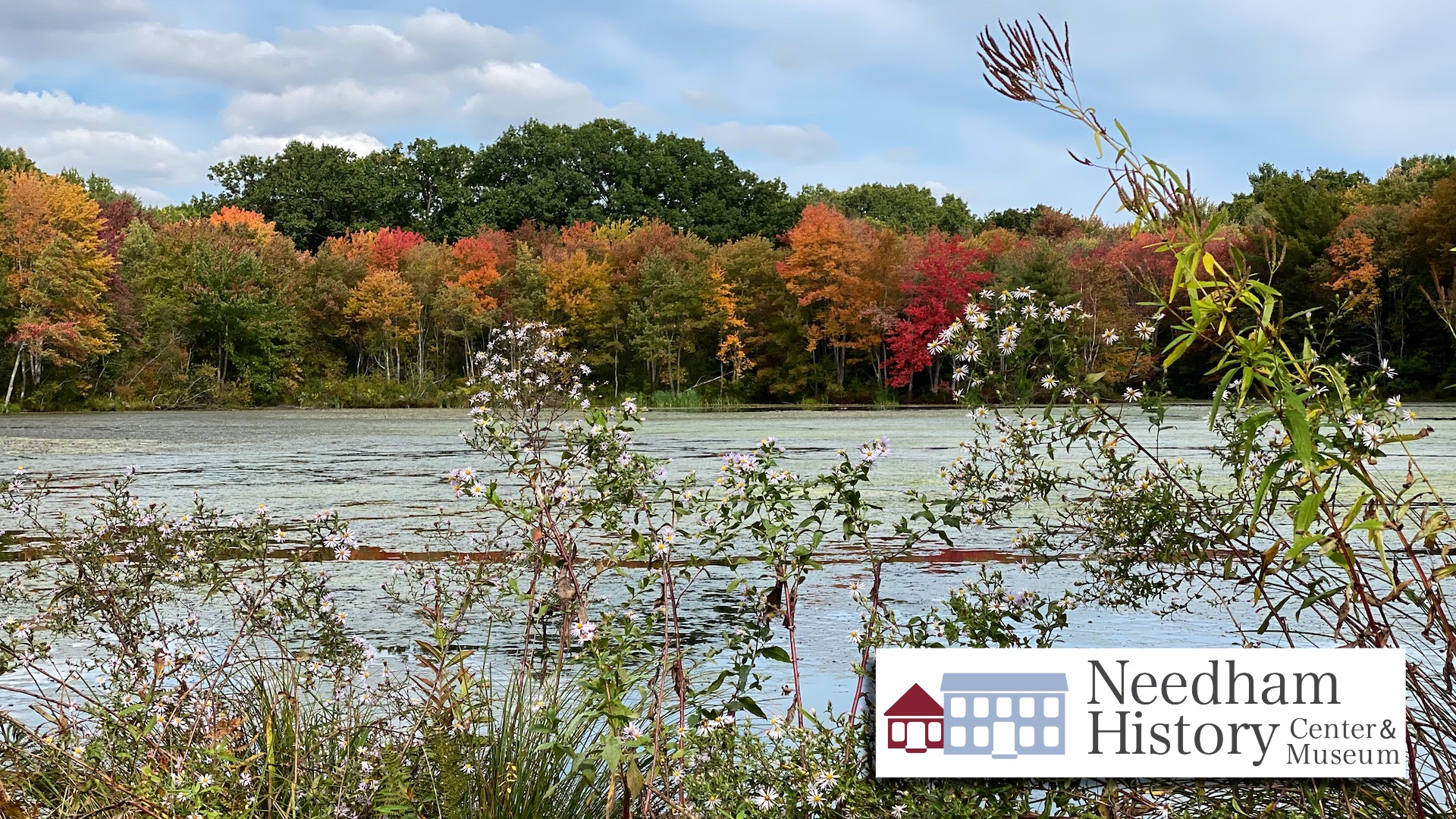
Needham History: The Dedham Avenue Reservoir
Once we finally decided we needed it, demand grew fast.
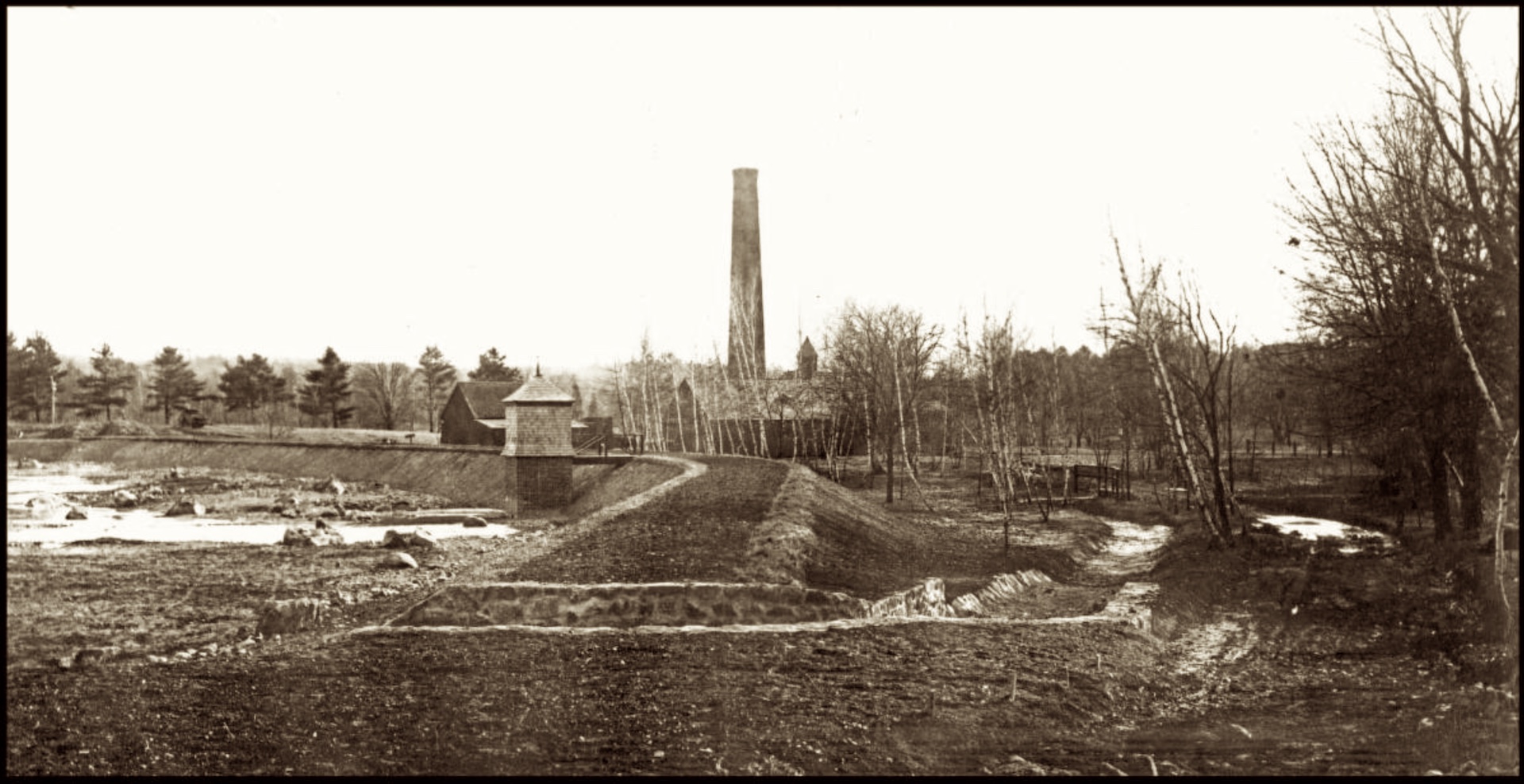
Excavating and grading the Reservoir basin. The pumping house is in the background. These photos of the construction of the reservoir were made by the firm directing the work – Louis E. Hawes, Civil & Hydraulic Engineers, Boston.
The Dedham Avenue Reservoir
Take a stroll around the Dedham Avenue Reservoir! A couple of years ago, Needham Park and Recreation rebuilt the path that circles the reservoir into a smooth and fully-accessible half-mile walkway. The town stocks the lake with fish, and its quiet margins also attract wildlife from the nearby Charles River – including, at least one year, an otter! The half- mile path is as attractive in the fall as it is in the spring and summer.
Although the pond is now just used for recreation, it was the town’s original water
works. Needham had been trying for some years near the end of the 19th century to create a public water supply, but the Selectmen were unable to get the necessary two-thirds vote of approval from Town Meeting. The plan was finally approved in 1889, and the town soon began pumping water from Colburn’s Spring near Bird’s Hill to the more densely- populated parts of town near the center. In 1897 the town purchased the rest of the Colburn farm, about 15 acres between Great Plain and Dedham Avenues, and Green Street to the west, for the “Water Lands,” to control use and preserve the purity of the water supply (the Water Lands are roughly the DPW site and the land currently leased by the town to the Needham Golf Club). In 1900 the town built a second well, and in 1902 purchased additional acreage for the water lands. The pumping station was built on Dedham Avenue, and the water tower was located on Ryan’s Hill (now called Tower Hill).
Building the retaining wall around the reservoir basin, and the raised path around its perimeter.
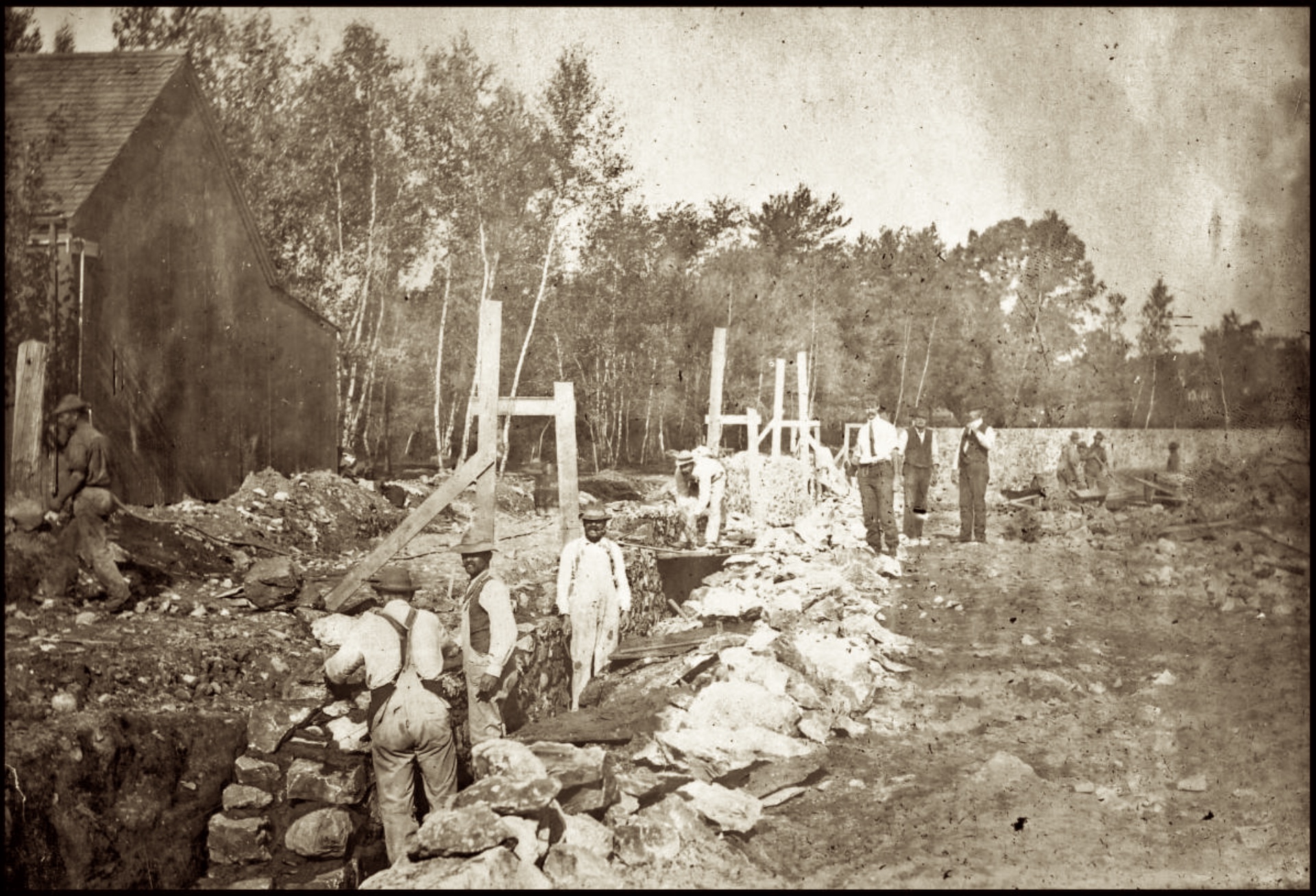
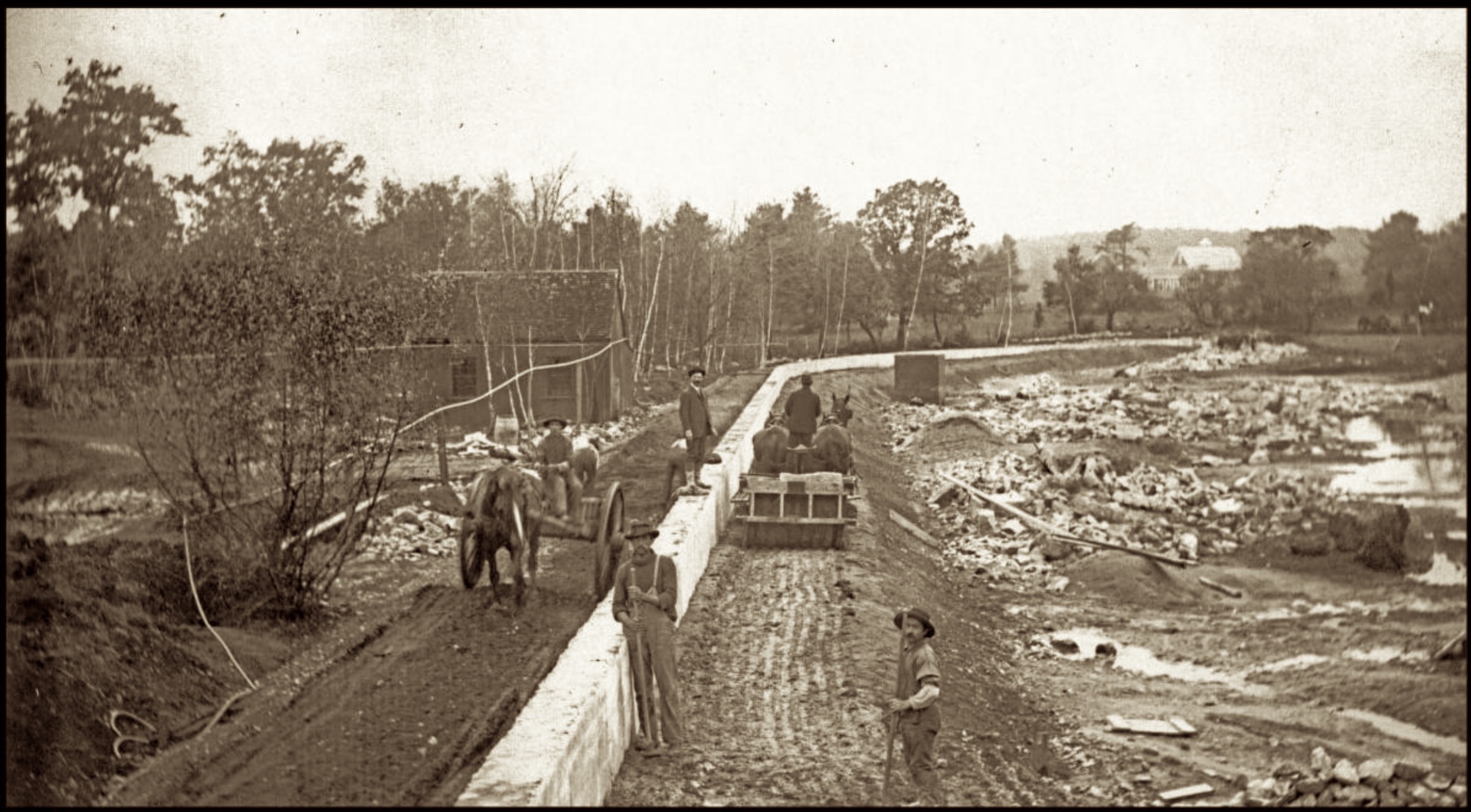
The Reservoir Dam was built in 1903 to surround and contain the basin dug for Needham’s public water supply. The reservoir was filled (and still is) by the Bird’s Hill Brook. When built, the basin averaged about seven feet deep and held about nine million gallons. The pumping station pumped more than 100 million gallons that year, and the amounts increased rapidly. Within the next few years, the water mains were laid through most of the town. In addition to providing drinking water, the reservoir served as an emergency water supply for the Fire Department.
Needham’s water department has since added pumping stations to accommodate the town’s rapid growth, as well as a supplementary-supply contract with the MA Water Resources Authority. The wellfield on Charles River Street, built in the 1930s, now provides the majority of the town’s water. The second pumping station on St. Mary Street handles the input from the MWRA. Water is pumped into the town’s two storage tanks, the one on Tower Hill (officially known as the Dunster Road storage tank; 1.5 million gallons), and the Birds Hill storage tank on Hillcrest Road (2.5 million gallons). Since the 1950s, the Dedham Reservoir has been used primarily for recreational purposes – fishing, ice skating, canoeing, and now hiking. And occasionally otter-spotting.
 |
Gloria Polizzotti Greis is the Executive Director of the Needham History Center & Museum. For more information, please see their website at www.needhamhistory.org. |
